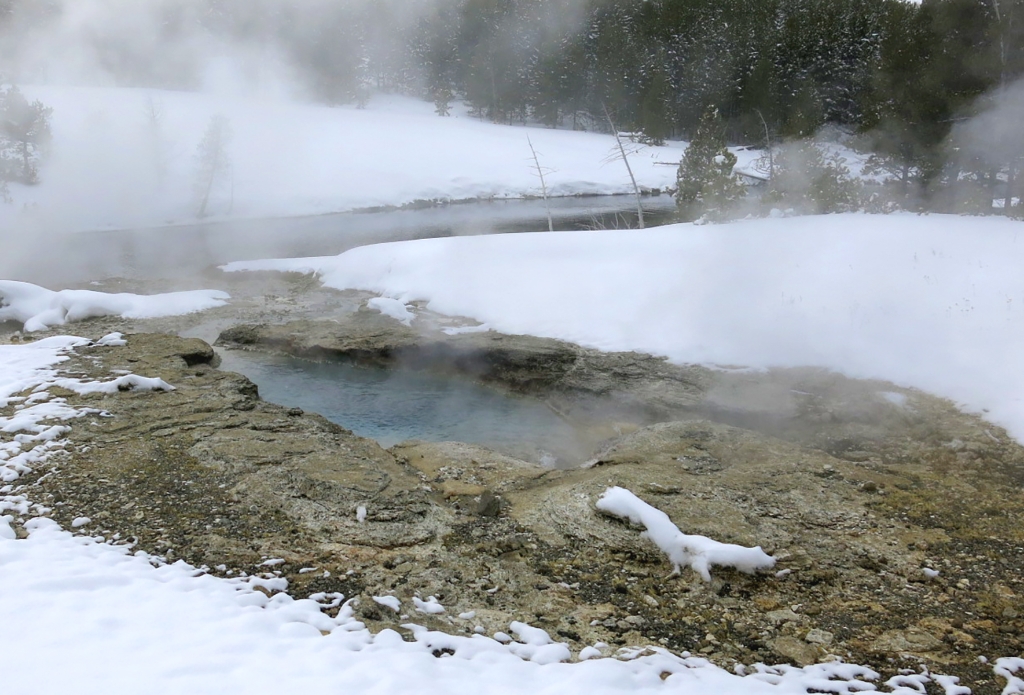
Set slightly down into the solidified sinter hillside, Spiteful Geyser is a deep, clear pool that is actively boiling and has some sawtooth geyserite along the edge of the pool along with orange thermophiles. The pool runs off down the hillside. The runoff into the river is a colorful braided channel with orange thermophiles. It possibly formed from a hydrothermal explosion. With many periods of dormancy, Spiteful Geyser has not erupted since 1998.
Spiteful Geyser has an average temperate of 179.5°F (81.9°C), an average pH of 8.4, and an average conductivity of 1986 uS/cm.
Geysers
Geysers have constrictions in their plumbing systems that prevent water from moving freely to the surface where heat would escape. Water beneath the constrictions creates a buildup of steam. Eventually the steam pushes water past the constrictions and the geyser erupts.
Upper Geyser Basin
The majority of world’s active geysers are in the Upper Geyser Basin, including Old Faithful. Only four other places in the world have large concentrations of hydrothermal features: Russia (Kamchatka), Chile, New Zealand, and Iceland.
The heat for the hydrothermal features comes from Yellowstone’s volcano. Molten rock or magma may be as close as 3-8 miles (5-13 km) underground. Rain and snow supply water that seeps down several thousand feet (more than a kilometer) below the surface where it is heated.
Underground cracks form a natural plumbing system. Hot water rises through the plumbing to produce hot springs and geysers.
Use Caution in Hydrothermal Areas
- Stay on boardwalks and designated trails.
- Hydrothermal water can severely burn you.
- Never run, push, or shove.
- Supervise children at all times.
- Do not scratch hydrothermal mats.
You are responsible for your safety.
Think safety, act safely. Yellowstone is a dangerous place.
Is there something we missed for this itinerary?
Itineraries across USA


















































